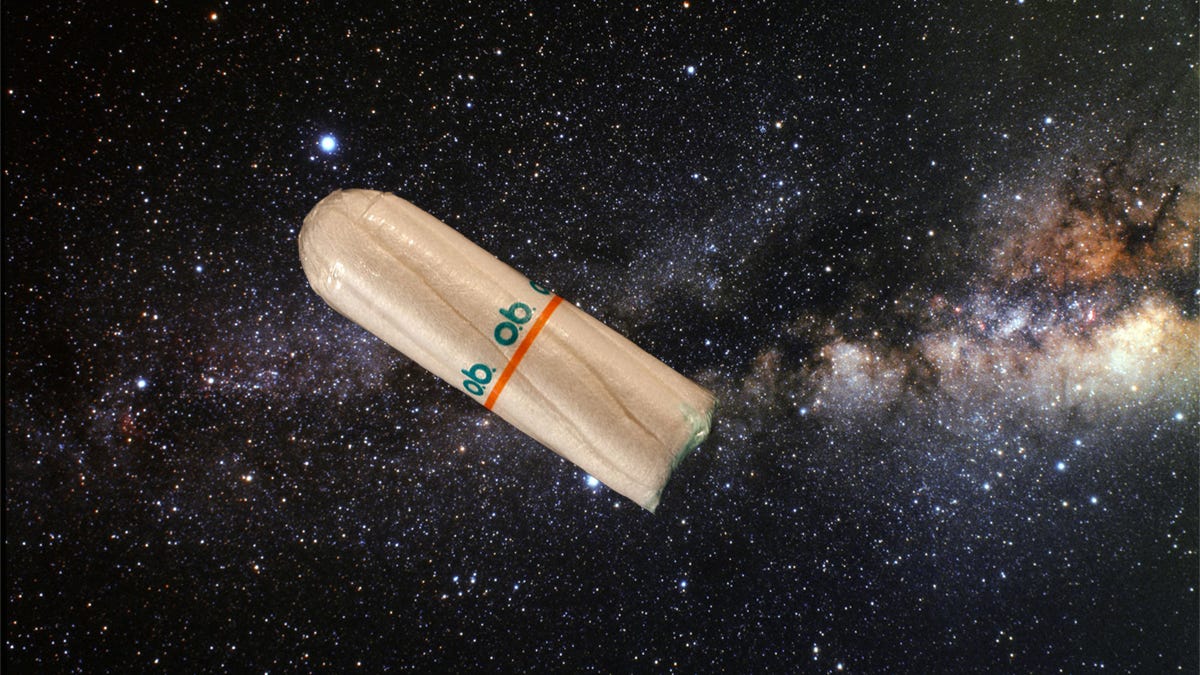The astronaut's guide to getting your period in space
There are as many options for microgravity conditions as there are on Earth, but managing menses on a mission to Mars poses its own set of challenges.
If you're a human being in space, you're going to encounter logistical problems associated with the basic upkeep of your body. For men, shaving poses a bit of a challenge. It can be done, but you don't want stray whiskers floating around and potentially getting into delicate equipment.
For women, historically, menstruation has posed something of a challenge. In fact, the Lovelace Women in Space program of the 1960s was closed down partially on the advice of physicians Johnnie Betson and Robert Secrest, who believed that menstruation would make women unfit for performing astronaut duties in space.
"The intricacies of matching a temperamental psychophysiologic human and the complicated machine are many and, obviously, both need to be ready at the same time," they wrote in a paper. "It seems doubtful that women will be in demand for space roles in the very near future."
A pin was put in sending women to space, at least in America (even though Russian cosmonaut Valentina Tereshkova orbited the Earth for three days in 1963). The idea wasn't seriously revisited until the 1970s. The big concern then was that microgravity would halt or reverse the blood flow, causing all sorts of unnameable abdominal horrors in female astronauts.
As NASA astronaut Margaret Rhea Seddon recalls, "We were asked, 'What do we do about this?' We said, 'How about we just consider it a nonproblem until it becomes a problem? If anybody gets sick in space you can bring us home. Then we'll deal with it as a problem, but let's consider it a nonproblem.' They did. I'm not totally sure who had the first period in space, but they came back and said, 'Period in space, just like period on the ground. Don't worry about it.' I think the big controversy was about -- and a lot of the women disagreed -- how many feminine hygiene products do you put [onboard]."
It wasn't until 1983 that the first American woman got to go to space. That was, of course, Sally Ride, and she noted in a 2002 interview that the men equipping the missions had difficulty with that very concept. "I remember the engineers trying to decide how many tampons should fly on a one-week flight; they asked, 'Is 100 the right number?'" she said.
Female astronauts are a lot more common now, and everyone is a lot more sanguine about spacestruation. As European Space Agency astronaut Samantha Cristoforetti explained, female astronauts are able to choose whichever period management method suits them best. Overall, period suppression using oral contraceptives seems to work best. Each month of pills has three weeks of hormone pills and one week of inactive pills, which triggers a period-like withdrawal bleed. By simply skipping over these inactive pills, women can forego having periods entirely for a time.
For the standard six-month International Space Station stint, this isn't a problem. But for a three-year return trip to Mars, it's a little more problematic. The contraceptive pill needs to be taken daily; for three years, that's around 1,100 pills, the packaging of which adds to the spacecraft's payload (every bit counts) and will require disposal.
Astronaut Sally Ride, first American woman in space, who gamely helped educate NASA on menstrual requirements.
According to space gynaecologists Varsha Jain of King's College London and Virginia Wotring of Baylor College of Medicine, with a paper published today in the journal Microgravity, long-acting reversible contraceptives such as hormonal IUDs and subdermal implants such as Implanon could solve these problems. But they're not without their own issues that need to be considered. Both Implanon and oral contraceptives increase the risk of blood clots, for instance.
Another potential problem is loss of bone mineral density, which can occur with treatments such as the progestin shot. On Earth, where gravity will restore the bone, this isn't a problem. In space, where astronauts lose bone density daily in the microgravity environment, it could be.
"For any woman, choice of a contraceptive requires careful consideration of benefits and risks with respect to her lifestyle and needs. The spaceflight environment adds some extra complexity to the overall equation, and we want female crewmembers to be able to make well-informed choices for their missions," Wotring said.
"Because loss of bone mineral density is known to occur on spaceflight missions, we need more data regarding health effects, including bone health, with long-term use of hormone treatments not just for contraception (as most women use them), but also for the less-common use to suppress menses."


